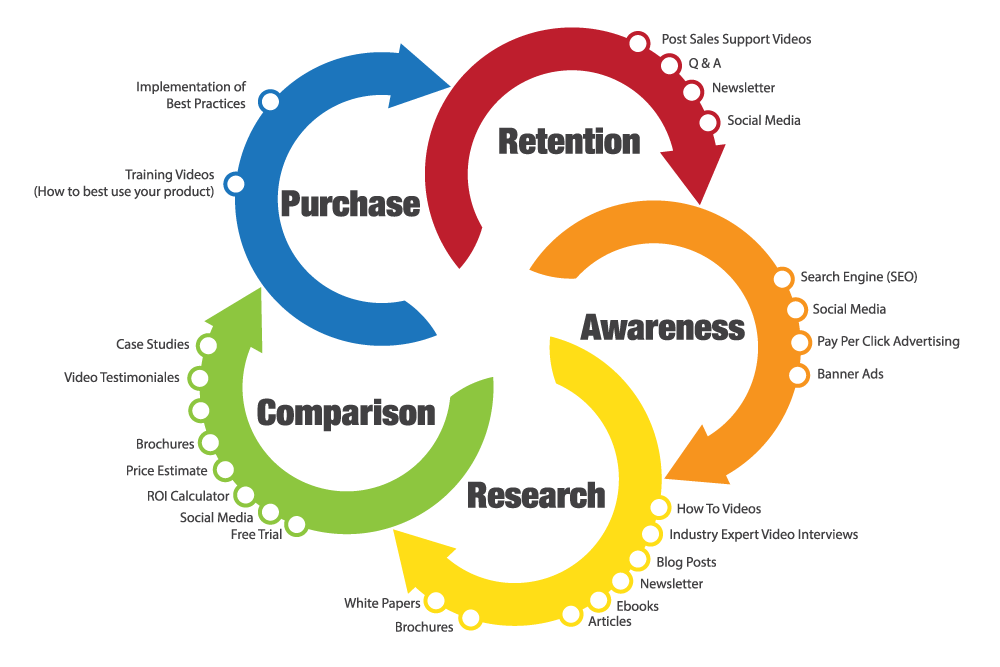Customer lifecycle refers to the various stages a prospective or existing customer progresses through in a company’s marketing and sales funnel.
While there’s no real consensus for the names of each stage of the customer lifecycle, the lifecycle typically includes the following stages:
- Awareness – Lead generation for the company’s product(s)
- Marketing and Knowledge Company-generated information for the product as well as a customer’s research of ratings and reviews from other sites and customers and comparison against competing products
- Sales Conversion The customer purchases product from sales funnel
- Customer Experience and Product Support Customer consumes product and utilizes company’s customer support as needed
- Retention Satisfied customers develop brand loyalty and continue to use product
- Advocacy and/or Repeat Purchase Satisfied customers share positive customer experience with friends, colleagues and social network community as well as potentially purchase additional products / services from the company
Companies analyze each stage of the customer lifecycle to maximize conversions, revenue, and overall satisfaction for their products. As a result, the customer lifecycle and metrics for each stage play key roles in both customer relationship management (CRM) and customer experience management (CEM) strategies.
 Image Source: ActiveCampaign
Image Source: ActiveCampaign
Traditional vs. Modern Customer Lifecycle
Customers have traditionally moved through the customer life cycle stages in a linear fashion, but as social networking and product reviews and ratings sites have evolved and increased in popularity, customers no longer primarily proceed through each stage of the cycle in order and may instead skip stages or bounce back and forth between various stages.
The increased reliance on social networking and product review sites has also resulted in companies having to compete with more information about their products from a variety of sources and customers outside of the company’s marketing department.
Companies can harness these modern trends by successfully optimizing each stage of the customer lifecycle to ensure customer satisfaction and in turn create a higher likelihood of brand loyalty and positive advocacy for the company and its products.

